Results
(1) Do volcanic eruptions exhibit seasonal patterns?
Yes. Some of them do.
Volcanic eruptions do in fact exhibit seasonal patterns when we plotted the eruptions within the time they occurred of the tidal phase. Here are some interesting distributions we encountered:
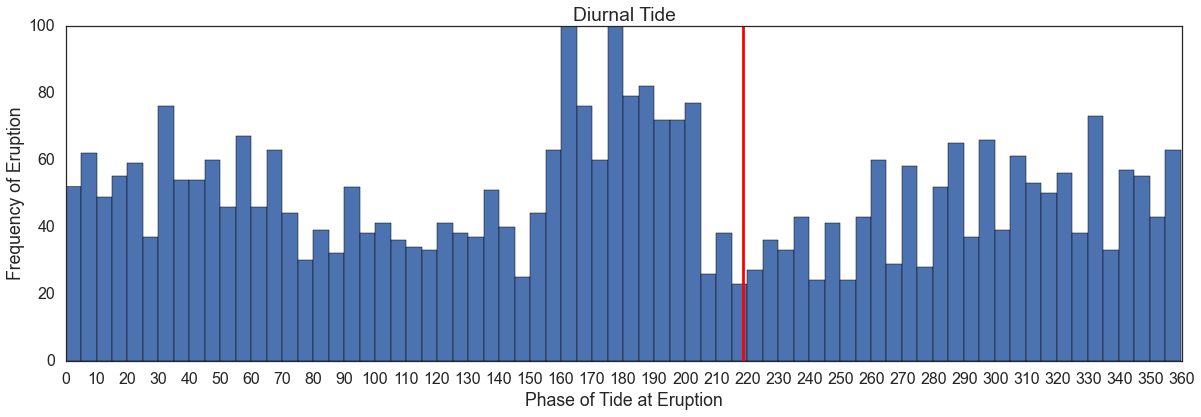
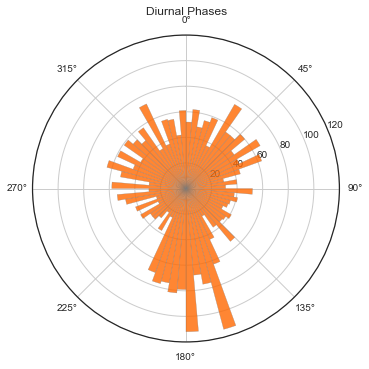
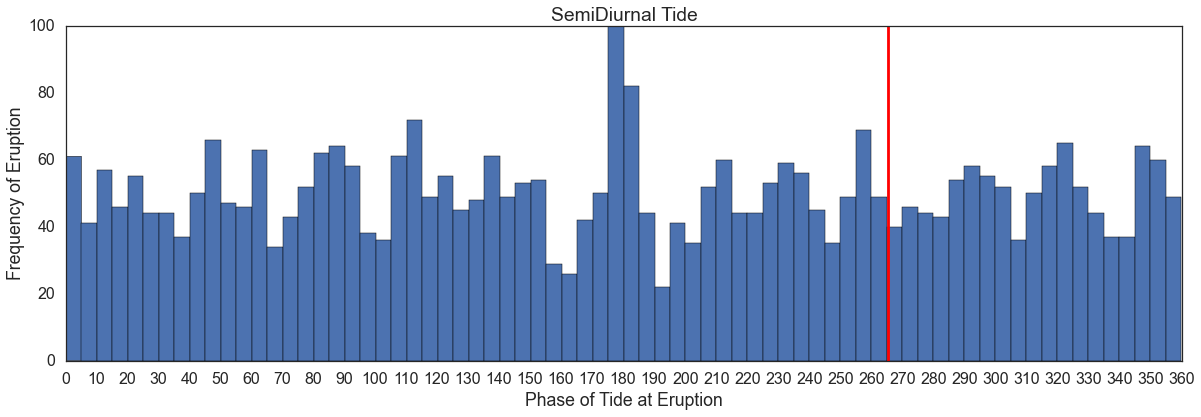
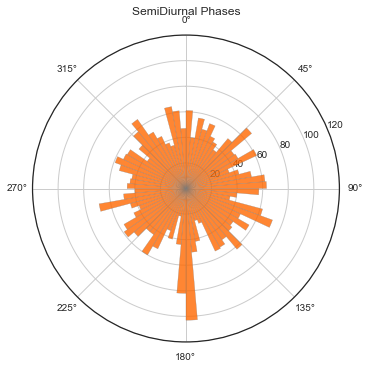
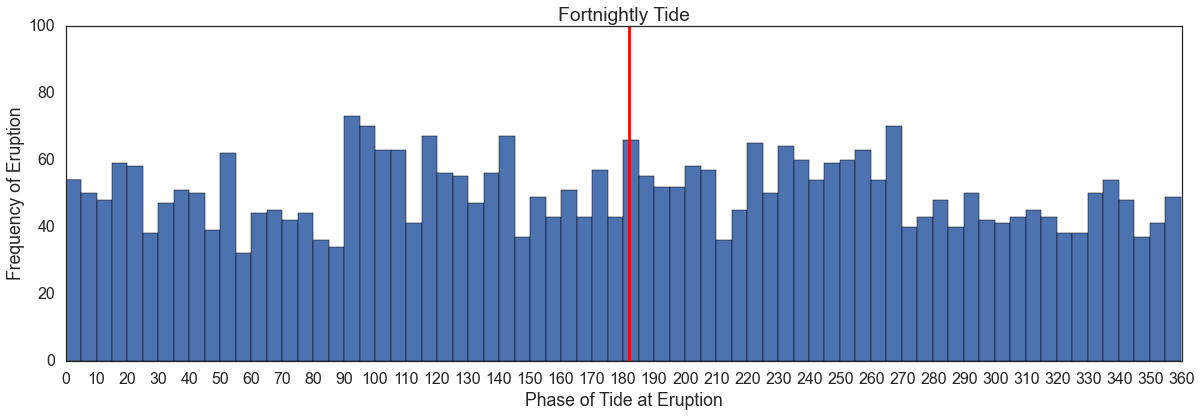
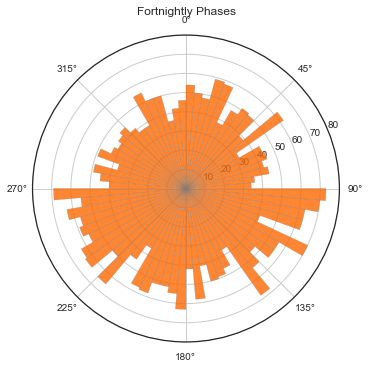
Our Rayleigh Test Statistics were the following:
- Diurnal: 1.43 | P-value: 0.239
- Semi-diurnal: .542 | P-value: 0.582
- Semi-annual: 1.778 | P-value: 0.169
- Fortnightly: 13.614| P-value: 0.0
The Rayleigh test gives a statistic, which we looked up in a table. Based on that table, the fortnightly and monthly have p-values that are significantly less than .05 and the solar semiannual has a p-value less than .2. Based on these results, we reject the null hypothesis that there is no unimodal distribution and go in favor of the hypothesis that a unimodal distribution does in fact exist.
The diurnal and semidiurnal tides fail the Rayleigh test, meaning that the test indicates that the distribution has a high probability of being uniform; however, when we look at the plots, they seem to have a slightly bimodal distribution, particularly the diurnal tide, which the Rayleigh test does not take into account.
(2) What are the specific volcano attributes that cause a volcano to be more susceptible to tidal forces?
Dominant Rock Type, Crust, and Tectonic Setting
The results varied for different phases, but as a whole, the features that were most frequent ones seen. Given that the type of volcano and how it was formed often times correlates to its eruptivity rate, these results are not suprising. The output of our code is as follows:
For phase type: Fornightly Phases
Best Features: Tectonic Setting, Crust
Best Score: 0.571
For phase type: Monthly Phases
Best Features: Cat Elevation, Region, Crust, Dominant Rock Type
Best Score: 0.435
For phase type: Semiannual Phases
Best Features: Dominant Rock Type, Tectonic Setting
Best Score: 0.579
For phase type: Diurnal Phases
Best Features: Crust, Region, Dominant Rock Type
Best Score: 0.479
For phase type: SemiDiurnal Phases
Best Features: Region, Tectonic Setting, Dominant Rock Type
Best Score: 0.512
(3) How well can we predict the phase at which a volcano will erupt based on volcanic and eruptive features?
Not extremely well, but better than no prediction power.
Considering the scores we received on the Random Forest test, we have moderate to low capabilities of predicting whether a volcano will fall on an upper or lower tide. In the future, we would like to see the use of some sort of Bayes' Rule. Given the sparsity of our data after wrangling, we did not have the proper amount of data that we would need to build a really good Bayes'' model. Hence, if we used Bayes' Rule, we would do something to the tune of:
What is the probability of an eruption occurring given that the volcano has feature X,Y,Z, is within this phase of the gravitational force and erupts according to this frequency.
Given that our highest score was a .57, we do not consider that a very good F1 score.
(4) Which tidal force correlates the strongest with volcanic eruptions?
Monthly
The monthly phase correlates the strongest, which seems to suggest that volcanoes eruption rates correlate strongest to shorter periods. This is consistent with some studies that correlated volcanic eruptivity rates to shorter cycles such as the fortnightly cycle.